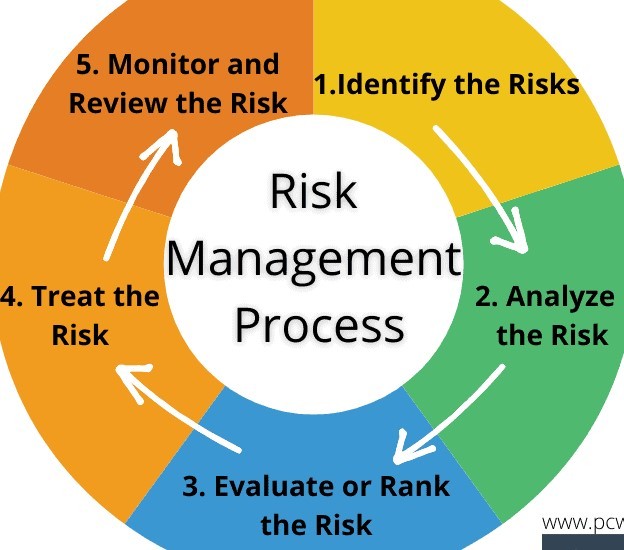The Long-Term Importance of Risk Management in Building Competitive Advantage
The Long-Term Importance of Risk Management in Building Competitive Advantage
Blog Article
Exploring the Importance of Risk Management for Effective Decision-Making Methods
In the elaborate globe of company, Risk Management becomes an important consider the decision-making procedure. The ability to recognize prospective hazards and possibilities, and plan accordingly, can mean the difference in between success and failing. With devices such as SWOT and PESTEL, organizations are outfitted to make enlightened choices, promoting strength and versatility in an ever-changing setting. Wondering exactly how this functions? Let's unload the dynamics further.
Comprehending the Idea of Risk Management
Risk Management, a crucial component in decision-making, is typically misconstrued or oversimplified. Risk Management entails structured and regimented strategies, using data and informative analyses. From economic uncertainties, lawful liabilities, critical Management errors, to crashes and all-natural calamities, it addresses different risks - importance of risk management.
The Role of Risk Management in Decision-Making Processes
In the world of strategic planning and service operations, Risk Management plays an indispensable duty in decision-making procedures. It helps in identifying prospective dangers and uncertainties that can impact the achievement of organization goals. By tracing these threats, companies can formulate techniques to mitigate their influence, ensuring service continuity and stability. Risk Management thus ends up being a crucial tool in decision-making, aiding leaders to make enlightened selections based on a detailed understanding of the risks involved. It urges an aggressive approach, making it possible for companies to anticipate and prepare for feasible future situations. This significantly decreases the chance of adverse consequences, advertising extra effective and reliable decision-making techniques. For that reason, Risk Management acts as a vital element in the decision-making processes of any kind of company.

Just How Risk Management Boosts Strategic Planning
In the context of calculated planning, Risk Management plays a pivotal role. Launching with the identification of potential risks, it additionally includes the implementation of Risk reduction procedures. The duty of Risk Management is dynamic but not fixed, as it demands continuous tracking and adjusting of methods.
Recognizing Possible Dangers

Carrying Out Risk Mitigation
Risk mitigation strategies can range from Risk evasion, Risk transfer, to run the risk of reduction. Each strategy ought to be customized to the particular Risk, considering its prospective effect and the organization's Risk resistance. Efficient Risk mitigation calls for a deep understanding of the Risk landscape and the prospective influence of each Risk.
Surveillance and Adjusting Methods
Though Risk reduction is a crucial action in critical preparation, continual monitoring and change of these strategies is just as crucial. It likewise provides an my sources opportunity to review the success Website of the Risk Management procedures, enabling changes to be made where needed, additional boosting strategic planning. Surveillance and adjusting Risk Management techniques is a crucial element for enhancing an organization's durability and tactical planning.
Instance Researches: Effective Risk Management and Decision-Making
In the globe of company and financing, effective Risk Management and decision-making commonly serve as the columns of flourishing enterprises. These situations highlight the value of astute Risk Management in decision-making procedures. These cases underscore the essential duty of Risk Management in critical decision-making.
Devices and Strategies for Effective Risk Management
These tools, such as Risk signs up and warmth maps, help in identifying and examining possible risks. Risk reaction strategies, a vital element of Risk Management, entail approving, staying clear of, transferring, or mitigating risks. With these techniques and devices, decision-makers can browse the complex landscape of Risk Management, thereby assisting in notified and effective decision-making.
Future Fads in Risk Management and Decision-Making Approaches
As we explore the large landscape of Risk Management, it comes to be evident that the methods and devices utilized today will certainly continue to progress. The idea of Risk culture, where every member of an organization is aware and entailed in Risk Management, will certainly obtain more prestige. These trends advertise an even more inclusive and proactive approach towards Risk Management and decision-making.
Verdict

Risk Management thus becomes a vital device in decision-making, aiding leaders to make informed options based on an extensive understanding of the threats entailed. Risk reduction strategies can vary from Risk evasion, Risk transfer, to risk decrease (importance of risk management). Efficient Risk mitigation needs a deep anchor understanding of the Risk landscape and the possible influence of each Risk. Risk response strategies, a crucial element of Risk Management, include accepting, preventing, moving, or mitigating risks. The principle of Risk society, where every member of an organization is mindful and entailed in Risk Management, will obtain much more prominence
Report this page